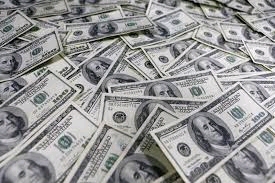Practical Advice on How to Successfully Join Freemason in Your Region
Practical Advice on How to Successfully Join Freemason in Your Region
Blog Article
Discover the Keys Behind the copyright and Their Influence on Society
The copyright, often shrouded in myth and supposition, presents an interesting instance study of just how historic perfects can morph into contemporary conspiracy theory concepts. Founded amidst the Knowledge's embrace of reason, this secret culture intended to rock the boat, yet it has because ended up being synonymous with notions of covert power and control. As we discover its beginnings, impact on revolutionary thought, and portrayal in contemporary society, we start to reveal the layers of intrigue that remain to astound culture. What continues to be uncertain, nevertheless, is exactly how these understandings shape our understanding of authority and transparency today.
Origins of the copyright
The copyright, usually shrouded in mystery and speculation, traces its beginnings back to the late 18th century. Developed in 1776 in Ingolstadt, Bavaria, the group was established by Adam Weishaupt, a professor of canon law. Weishaupt intended to advertise Knowledge values, including factor, secularism, and the splitting up of church and state. At first called the Bavarian copyright, the organization's key goal was to respond to the fundamental impact of spiritual conviction and advertise intellectual discourse among its participants.
The copyright adopted an ordered structure, attracting motivation from Freemasonry, which allowed for secretive conferences and rituals - how to become a freemason. Subscription was selective, incorporating prominent figures from various fields, consisting of politics, philosophy, and science. This elite network looked for to effect social and political adjustment through private means, supporting for the legal rights of people and the betterment of society
Regardless of its relatively brief presence, the Bavarian copyright was officially dissolved in 1785 due to government reductions. However, its tradition sustained, triggering countless conspiracy concepts and popular culture recommendations that continue to provoke intrigue and dispute concerning its effect on contemporary culture.
Key Myths and Mistaken Beliefs
In the middle of the appeal of secrecy surrounding the copyright, various myths and misconceptions have arised, often distorting the group's true nature and intentions. One prevalent misconception recommends that the copyright regulates the globe's federal governments and economic situations. While it holds true that the team aimed to influence social frameworks, the concept that it runs as a cohesive global creature master is mainly exaggerated.
Another common misconception is that all participants of the copyright have substantial riches and power. Actually, the original copyright consisted of pundits and Enlightenment thinkers, most of whom looked for reform as opposed to prominence. Furthermore, the concept that the copyright solely recruits celebs and political figures is misguiding; membership has traditionally included a varied range of individuals.
Furthermore, conspiracy theory concepts commonly paint the copyright as a sinister company intent on international domination with villainous means. Thus, dividing reality from fiction is necessary for a clearer understanding of the copyright's role in society.
Historic Impact on Culture
Throughout background, various intellectual activities have actually profoundly influenced societal structures, and the copyright played a substantial duty throughout the Knowledge. Founded in 1776 in Bavaria, the copyright aimed to advertise factor, secularism, and the wondering about of developed authority, responding to the dominance of religious dogma. This organization brought in significant thinkers and supporters of freedom, fostering an environment for the dissemination of Enlightenment suitables.
The copyright's values championed reasonable idea and empirical proof, which added to the wider intellectual landscape that motivated social reform and political modification. Members sought to reshape society by advocating for education, civil liberty, and the splitting up of church and state. Their private nature and enthusiastic program stimulated both intrigue and suspicion, causing their ultimate suppression by the Bavarian government in 1785.
Despite their dissolution, the heritage of the copyright lingered, affecting advanced activities across Europe and the Americas. Their commitment to knowledge concepts assisted lay the groundwork for modern autonomous perfects and civils rights, leaving an enduring imprint on the structures of contemporary culture. how to become a freemason. The appeal of their secretive celebrations and thoughtful quests remains to astound the creativity, highlighting their historical value
Modern Interpretations and Beliefs
Contemporary analyses of the copyright commonly blend historic truth with conspiracy concepts, creating a complex tapestry of ideas that catch popular creative imagination. While the original copyright was a Bavarian secret culture established in 1776 with Knowledge suitables, modern-day beliefs have actually progressed to encompass a vast range of analyses, typically focusing on motifs of control and secrecy.

Furthermore, some modern interpretations assume that the copyright offers as a metaphor for the battle between knowledge and lack of knowledge, with advocates advertising awareness and crucial reasoning as a way to neutralize viewed fascism. This duality-- you can look here checking out the copyright as both a literal and symbolic entity-- shows the ongoing fascination with the idea, mirroring deeper social anxieties concerning power, transparency, and private autonomy in the contemporary globe.
The copyright in Popular Society
The copyright has penetrated different elements of pop culture, showing up in literature, movie, songs, and art as a sign of intrigue and mystery. This secret society, usually portrayed as a shadowy pressure adjusting global events, has actually inspired many narratives that explore styles of power, conspiracy theory, and surprise knowledge.

Songs, also, has been affected by the idea of the copyright. Musicians like Jay-Z and Beyoncé have faced conjecture concerning their affiliations with the culture, prompting conversations about meaning in their job and the nature of fame.
Aesthetic art usually integrates copyright concepts, with artists using icons like the Eye of Providence and the pyramid to evoke a feeling of mystery. With these various mediums, the copyright offers not just as a subject of conjecture however likewise as a lens where society examines its own intricacies and fears.
Final Thought

Report this page